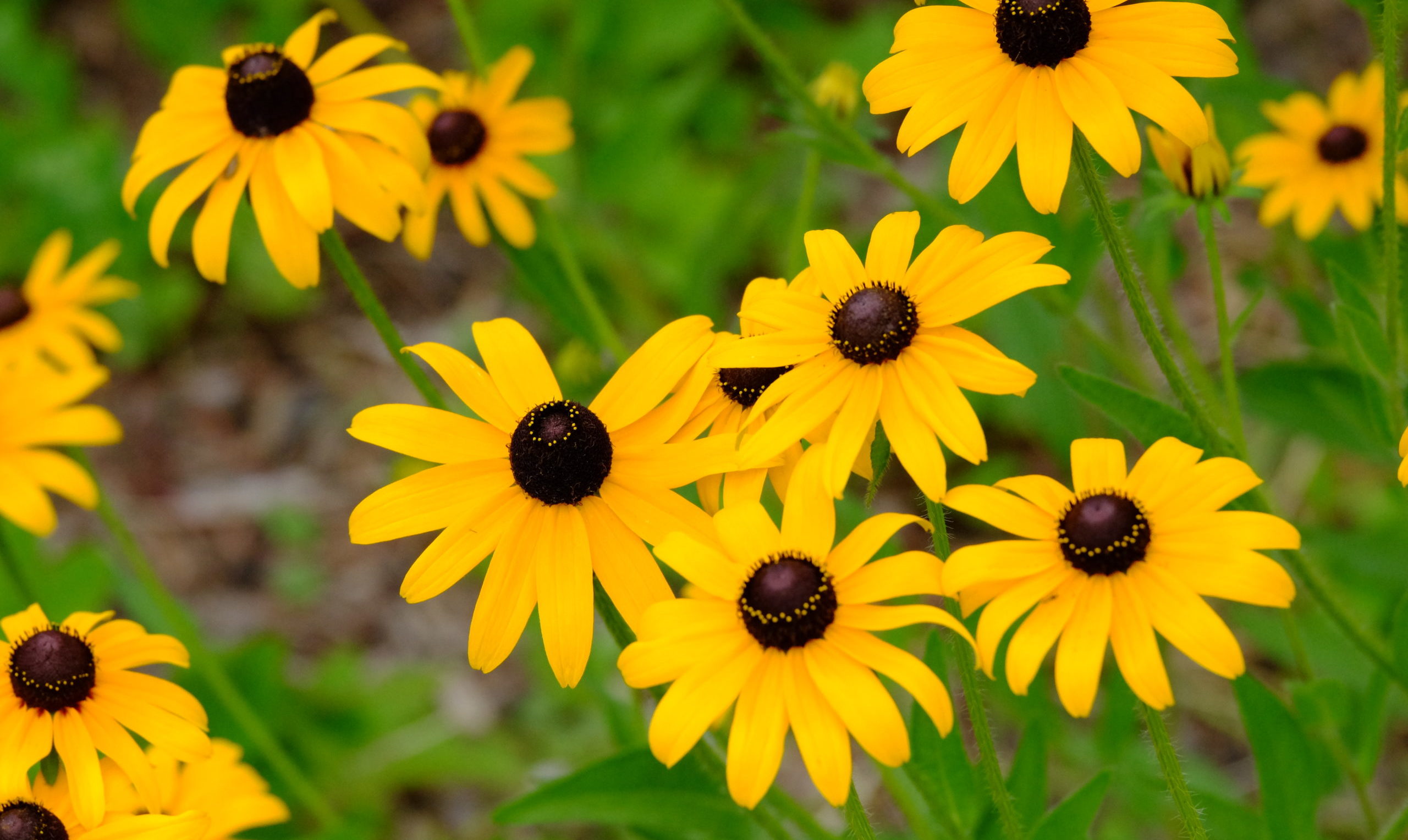Follow these steps:
1. Assess your property
When figuring out which native species to plant, take the time to assess your land properly – this will lead to better results. There is no “one-size-fits-all” way to properly plant and maintain all native plants because needs can vary greatly between plant species.
Space
Evaluate how much space you have, keeping in mind that certain plants will grow quite large over time.
Sun
Evaluate how much sun reaches the area you want to plant.
General guidelines:
- FULL SUN = 6 hours or more of direct sunlight per day
- PART SUN = 2-6 hours of direct sunlight per day
- SHADE = 2 hours or less of direct or dappled sun per day
Soil
Quickly dig a small hole where you want to plant and do a simple soil test by look and feel.
General soil types:
- SAND = soil that is easy to dig and crumbles apart on your shovel.
- LOAM = soil that is easy to dig but feels more earthy than sandy. Dark brown in colour with plenty of organic matter.
- CLAY = soil that is hard to dig and comes out as a big chunk on your shovel. When you rub the soil between your fingers it sticks together in a ball. Lighter in colour because it contains less organic matter.
Use this helpful video from LEAF to assess your yard
2. Understand which native plants are better than others
Native plants are definitely better for our environment than invasive plants. However, there are differences among native plants; some are more valuable to our urban forests than others. Plant native plants that are:
- From the Toronto region or Southwestern Ontario: Toronto’s native plants have made complex and specialized relationships with local biodiversity that may be very different from other regions in Ontario.
- Highly productive: Highly productive native plants mean those that are especially important for supporting Toronto’s biodiversity.1 For example, highly productive native plants – like our native red oak tree – support Toronto’s critical pollinator species and their associated predators. red oaks provide food and habitat for many important caterpillars and butterflies. These caterpillars and butterflies are an excellent food source for many of our native birds!2 Because of this, red oaks are considered a highly productive native.

THE MIGHTY OAK
A staggering 2300 species are known to be associated with oak, including:
- 38 bird species
- 31 mammals
- 108 fungi
- 1178 invertebrates
- 716 lichens
- 229 bryophytes
This is not including all of the bacteria and other microorganisms that also benefit from oak trees!
3. Get started with these native plant lists:
Always choose native species that are best suited for your property’s growing conditions. Talking to an expert at a native plant nursery will be helpful when choosing which species to plant.
There are many native plant lists out there, but be careful which ones you use. Remember, “native” means that the plant is very specific to its local environment. For example, a native plant list from all of North America is not suitable for Toronto as it encompasses far too many zones.
Get started with these lists:
- Toronto Nature Stewards herbaceous plant list for ravines
- Trees, Shrubs, & Vines of Toronto: A Guide to Their Remarkable World (See list of species on pages 58-62)
For gardens bordering ravines, keep plants native, minimally invasive and source from a high quality nursery
- A Flower Patch for the Rusty-Patched Bumblebee (See list of species on pages 24 – 53)
- Grow Me Instead Guide for Southern Ontario
Keep it local
Notice any native plants thriving on your property? Collect their seeds and grow some more!
- Learn more with Growing Trees from Seed: A Practical Guide to Growing Native Trees, Vines and Shrubs by Henry Kock (2008)
- Contact the Forest Gene Conservation Association to get Seeds of Ontario Trees & Shrubs: Field Manual for Crop Forecasting and Collecting by Ontario Tree Seed Plant (2014)
- Learn how with Seeds to Saplings
Footnotes
Information on this page was adapted from the LEAF video linked above: Local Enhancement & Appreciation of Forests. (2017, October 13). LEAF DIY Tree Planting Program Assess Your Yard [Video]. Youtube. https://www.youtube.com/watch?v=FmJ_qpYPoBM
1 – Tallamy, D. (2020). Garden for wildlife: natures best hope [online lecture]. Retrieved May 20, 2020, from: https://www.youtube.com/watch?v=iDRGryX1uVI
2 – Tallamy, D. (2020). Garden for wildlife: natures best hope [online lecture]. Retrieved May 20, 2020, from: https://www.youtube.com/watch?v=iDRGryX1uVI

